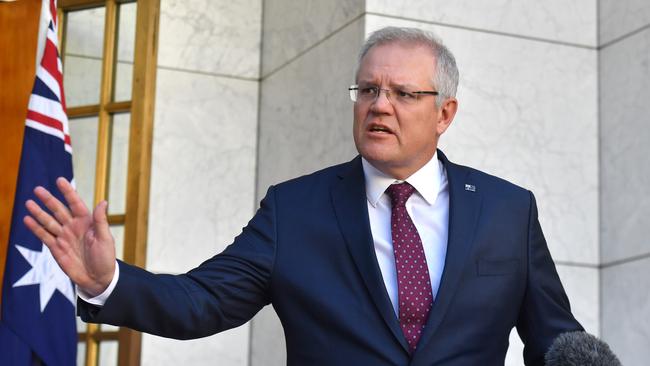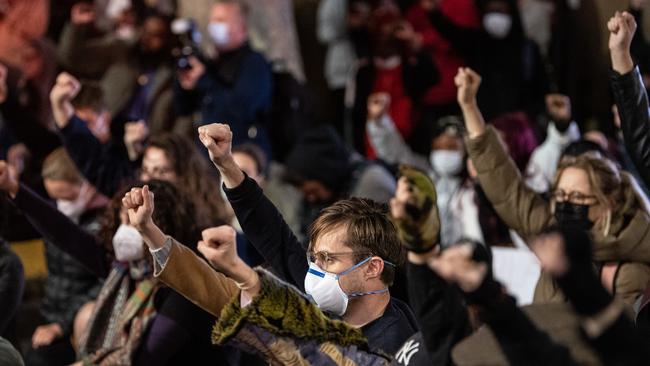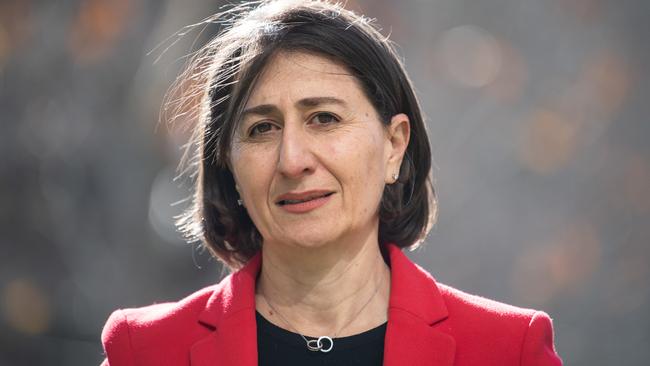James Morrow: Australia’s Black Lives Matter protests destroy government’s COVID-19 trust
For months, Australians have followed orders and done their part to flatten the COVID-19 curve. If only those same rules applied to the thousands of protesters wanting to take to the streets, writes James Morrow.
Rendezview
Don't miss out on the headlines from Rendezview. Followed categories will be added to My News.
It really is a measure of how well we’ve smashed the coronavirus in Australia that in a matter of weeks we’ve gone from police accosting breastfeeding mothers in the park for being Typhoid Mary to having an actual debate about whether a radical leftist protest march attracting up to 10,000 people can go ahead in the Sydney CBD.
And for all the justified outrage by people horrified that they may have had to miss funerals or cancel weddings or skip church or the footy only to be gazumped by activists attempting to bring US-style street politics Australia, the last 24 hours’ debate has actually done us a favour.
Because it has raised a number of questions that, in our quest to crush the curve, we have let fester off to the side.
Questions like, just how much of our restrictions are driven by science, and how much by politics?
Who are the police willing, and not willing, to confront?
And perhaps most importantly, is it really that dangerous to get out and about after all?
Look, it’s easy to call out the organisers of marches that were planned for Sydney, Melbourne, Brisbane, and who knows where else for being boneheaded. No question about that.
After all, we’re supposed to be in the middle of a pandemic and having steamrolled our curve the last thing anyone needs is a bunch of demonstrators threatening to blow it all up again.

But after witnessing the past week’s events the US, where the message from much of the media and even officialdom went in the space of days from “stay home, save lives” to “hit the streets and show your anger about George Floyd,” it’s hard to blame them.
Indeed, for a brief moment it seemed even Gladys Berejiklian got caught up in this very fashionable idea that wokeness is an antidote to the virus, and that you can gather in crowds as dense as you like to march, protest, or riot – so long as your cause is Twitter-approved.
Having gone slow on reducing restrictions – not allowing churches to have as many worshippers as restaurants have customers, and delaying opening up the regions reportedly on the basis of polling data – the Premier seemed suddenly to back down in the face of a cause.
Or at least a mob, which is what the state’s police minister, David Elliott, suggested to Ben Fordham when the radio host asked him Friday morning, “So you can’t stop a mob?” (Answer: “That’s exactly the point”).
Happily – and I write these words as a holder of passports from both countries – ordinary Australians seem to have been a bit more sensible than their US counterparts, even if some of their leaders, as well as sections of the press, thought otherwise.
Talkback lines burned up and normally apolitical Sydneysiders couldn’t contain themselves.
At one coffee line in the CBD, the barista was screaming at the injustice of not having been able to see her “nonno” while these protesters could seemingly do whatever they wished.

Contrast to the situation in the US. There, more than 1,000 doctors and other health professionals have signed an open letter essentially giving the protesters a pass, excusing them from social distancing requirements and stating that racism is “the paramount public health problem” and that, therefore, “protests against systemic racism, which fosters the disproportionate burden of COVID-19 on Black communities and also perpetuates police violence, must be supported.”
Amazingly, many of the doctors who signed are ones who had previously called for tougher measures against COVID-19.
A few weeks ago Gregg Gonsalves, co-director of the Global Health Justice Partnership and assistant professor of epidemiology (microbial diseases) at the Yale School of Public Health, essentially accused Donald Trump of Twitter for mishandling the disease.
In early May, Gonsalves publicly asked, “How many people will die this summer, before Election Day? What proportion of the deaths will be among African-Americans, Latinos, other people of colour? This is getting awfully close to genocide by default. What else do you call mass death by public policy?”
If these doctors are not careful, we will soon be very close to the days when magazine ads reminded us that nine out of 10 doctors preferred Camels.

How are people supposed to trust medical advice on anything after this?
And this is where things get really bizarre, particularly given the left’s belief that they are helping minority groups.
To repeat, in both the US and Australia we have been told – particularly by the left – that a funeral or a ballgame or a concert are all death traps that will trigger a tsunami of new cases.
But at the same time these same people are saying that minority groups can and should engage in an activity that might expose them to a disease that affects them disproportionately because … progress?
We will know in a few weeks from the data from the US whether or not the last week’s civil unrest has caused a spike in virus cases.
There is reason for hope; Georgia and Florida and a number of other states which weeks ago were criticised for opening early have not seen any big jumps in cases.
That’s no reason for us to let protest marches happen just yet in Australia, but it may wind up providing another data point to suggest it’s safe to open up more of the life of the country.
And yes, that will one day have to include protest marches – even if you disagree with them.

